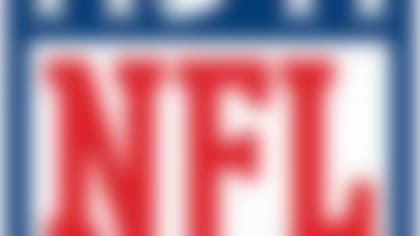The four-day pre-free agency negotiating window opened two Saturdays ago, but the reality is that the talking, between teams and players, was well underway last month at the NFL Scouting Combine. And we'll use a free agent -- a nameless one, to protect those involved -- who signed on Day 1 to illustrate how it worked out.
The player, via his agent, garnered interest from four teams in Indianapolis, with two showing more aggression than the others. On March 2, a fifth club emerged. The next day, a sixth team came out of the woodwork. And two days before the negotiating window opened, a seventh club came into the picture.
Battista: Free agency winners/losers

Who's capitalizing on the open market? Which general manager has egg on his face? Judy Battista has the answers. **READ**
On Saturday, with the window finally ajar, the two initially aggressive teams called, as well as one of the others from Indy. Conversely, there was silence throughout most of the day on Sunday. One of the two aggressors eventually called late that night. A deal was essentially done in the earliest hours of Monday morning.
That, in a nutshell, is how the high-rent district of free agency was sold in 2014.
Clubs had a better handle on the negotiating window than they did in 2013, the first year that this free agency quirk was in place, when there was a lot of silence. Different general managers and coaches used the three weeks from the start of the combine to the start of the signing period in different ways. And there was really no more respect for the rules than there had been in the pre-window days.
"Completely useless," is how one agent described the so-called tampering period. "It's completely useless."
Asked if he agreed with that assessment from the other side of the table, an AFC general manager said he didn't see much benefit: "Not from the team standpoint. ... It was bizarre. I'd have agents call and say, 'This is where we're at. You in?' I'd say, 'Yes.' Then they'd call back 10 minutes later, ask again, and I'd say, 'Yes.' And again. And 10 minutes after that it was, 'You in?' And I said, 'No, we're out.' "
This year's free agency was, in fact, the first round of free agency that we've had with some normalcy and routine in five years. In 2010, a huge number of would-be free agents wound up being restricted under the uncapped-year rules. In 2011, the market moved furiously coming out of the lockout as training camps opened. In 2012, the salary cap was flat. And last year, the rules were new.
This time around, the cap increased, spending recovered and clubs and agents were acclimated to the new rules.
But there is good and bad in everything.
Debate: The one who got away?

Will Seattle regret allowing Golden Tate to walk? Which free agency departures will come back to haunt NFL teams? **READ**
If the intent was to create anticipation leading into the start time of free agency at 4 p.m. ET last Tuesday and inspire a flurry of deals late that afternoon and into the night, then the mission was accomplished. Like so many other things NFL, this baby sold exceptionally well to a football-obsessed public.
Also, while it wasn't perfect, it did create some separation in tasks for decision makers.
"I love it," said one NFC GM. "The combine becomes the combine, and I can focus on the draft, which is nice. And I think this year, you notice more real negotiating going on earlier in the (window). On Saturday, it was like being at the combine, and there was more real negotiation happening Monday. People figured it out. It was more real."
The flip side of that is what the combine used to provide (back when the new league year would open just a few days after everyone left Indy): serious face-to-face negotiation.
The way it is now, the combine is simply too far separated from the start of free agency for serious, binding talks to take place. So what happens in Indy when teams meet with agents adds up to a whole lot of posturing. The four-day window to follow -- absent in-person meetings -- allows more wiggle room for each side to play games, with offers (technically not allowed) shopped and financial parameters for positions set.
"I think it's ridiculous to have it," said a second agent. "Teams are going at different paces, and that makes it difficult on the players' side to be patient for teams and see who's truly in it, when someone else is blowing up your phone for four days. The hardest part is to figure out the teams that have the interest that's genuinely real."
Schein: Moves I love/hate

In the end, most of the teams that showed that initial push in the negotiating window -- Miami, Tampa Bay, Cleveland and Arizona -- were the ones that landed guys out of the gate.
And in the end, what came out of the wash was a market that was reminiscent more of 2009 (and years prior to that) than it was of recent years (surrounding the 2011 lockout).
Tweaking could continue, too. Clearly, there are a number of things still to work out.
With all that in the books, here are 10 quick hits from the first week of free agency ...
1) Teams and agents did agree on one thing across the board: The negotiating period was too long. The idea of shrinking it down to 48 hours or so was floated by more than one party as this story was being reported.
2) Most -- with the one NFC GM quoted above being the exception -- want the combine and free agency back closer together to allow for more serious, face-to-face talks. That won't happen. The league wants the combine, start of free agency and draft spaced as far apart as possible within the context of the offseason to create what they call a "continuum."
3) One idea to fix that: Move the owners' meetings to the doorstep of the league year and make more of an event out of it, like baseball does with its winter meetings. The league has toyed with a schedule that has free agency in March, the combine in April and draft in May (full-time). So have the owners summit serve as the kickoff to the offseason.
4) People inside the New England Patriots organization take exception to the idea that the Darrelle Revis acquisition was out of character. Here's why: They view Aqib Talib as a Pro Bowler and Revis as a Hall of Famer. The way they see it, the reason to maintain fiscal flexibility is to always be in position to pounce on the rare opportunity to add a transcendent talent. That's how they look at Revis.
5) So how did the Tampa Bay Buccaneers benefit from releasing Revis? They were afforded the malleability to land two top-of-the-market guys. Revis was set for $16 million cash in 2014. Michael Johnson and Alterraun Verner will combine for $17 million. Better yet, that entire $17 million lands on Tampa's 2014 cap, which prevents future ramifications for the splurge.
6) While we're doing accounting, Talib, DeMarcus Ware and T.J. Ward will cost a combined $20.58 million on Denver's cap for 2014. Not bad at all. The rub, of course, is where things go from there. In 2015, the three are on the books for $26.08 million. In '16, it's $24.08 million. And the Broncos will have to pay Demaryius Thomas, Julius Thomas and Von Miller, et al.
7) Word is the old Cleveland Browns regime would've tagged Ward and let Alex Mack walk, so obviously, plenty has changed. But Ben Tate was always part of the plan. In fact, part of the logic in dealing Trent Richardson last September was that Tate would be available -- and wouldn't represent much of a downgrade. Plus, the price -- next two years: $5.4 million for Richardson, $7 million for Tate -- isn't that different.
8) Some positions crystalized quicker than others in free agency. Virtually all of the left tackle deals came together during the negotiating window. So did many for the defensive ends. The corners took a little bit longer, but by the end of Tuesday, Talib, Verner and Brent Grimes (who had re-signed with the Dolphins on March 3) were off the market. The reason why: limited landing spots plus limited supply equaled motivated agents.
Free-Agent Tracker

Follow all the developments on the NFL's open market with our up-to-the-minute tracking of 2014's free agents. **More...**
9) One position that hasn't been as hot is receiver. There are two reasons why. There aren't No. 1 receivers out there, only No. 2s, and teams have grown wise to the notion that projecting a No. 2 to be a No. 1 (i.e. Alvin Harper, David Givens) doesn't work. And then there's the receiver strength of the draft class, which caused teams to ask why you wouldn't wait for better players who come cheaper.
10)Jairus Byrd's six-year, $54 million deal came as a jaw-dropper. But maybe the most amazing thing is the record it broke for money for a safety, set by Eric Berry's rookie deal. The Chiefs star stands to make about $50 million over the six years of the contract. Thanks to Byrd, Berry has ample reason to ask for the moon and stars again, as does Earl Thomas.
Follow Albert Breer on Twitter @AlbertBreer.












